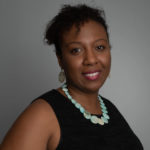Board relations. Fundraising. Volunteer management. Prospect research. Legal compliance. Accounting. Finance. Investments. Donor relations. Public relations. Marketing. Technology. Social media.
Every nonprofit struggles with these issues. Big nonprofits hire experts. The other 95% listen to Tony Martignetti Nonprofit Radio. Trusted experts and leading thinkers join me each week to tackle the tough issues. If you have big dreams but a small budget, you have a home at Tony Martignetti Nonprofit Radio.
View Full Transcript
Transcript for 628_tony_martignetti_nonprofit_radio_20230220.mp3
Processed on: 2023-02-17T20:17:25.701Z
S3 bucket containing transcription results: transcript.results
Link to bucket: s3.console.aws.amazon.com/s3/buckets/transcript.results
Path to JSON: 2023…02…628_tony_martignetti_nonprofit_radio_20230220.mp3.413629419.json
Path to text: transcripts/2023/02/628_tony_martignetti_nonprofit_radio_20230220.txt
[00:02:28.03] spk_0:
It’s a pleasure to welcome Preta Nyack and Lindsay waldron to nonprofit radio Pretty Nyack is a partner in the bridge span. We’re gonna do that again. No, I can’t have that, I can’t watch the first three words, it’s terrible. All right, let’s do it again. Bridge span group. Do people have trouble with that bridge span group? No, I don’t know why, I don’t know why people would, I did Okay bridge span group, the bridge span group, the bridge span group and welcome to tony-martignetti non profit radio big non profit ideas for the other 95%. I’m your aptly named host of your favorite abdominal podcast. Oh, I’m glad you’re with me. I’d be forced to endure the pain of necrotizing ulcerative ginger vos dermatitis. If you inflamed me with the idea that you missed this week’s show talent development with a few practices, you can turn your talent development process into an employee retention tool, leadership pipeline and a step toward greater inclusivity. Preta Nyack and Lindsay waldron, both from the bridge span group. Talk through their article On Tony’s take two. Non profit radio 50 redox here is talent development. It’s a pleasure to welcome to nonprofit radio free to Nyack and Lindsay waldron. Preta Nyack is a partner in the bridge span groups SAN Francisco office and head of bridge spans leadership and community services, she’s co author of the book nonprofit leadership development what’s your plan a for growing future leaders Lindsay waldron is manager in the bridge span groups boston office. She worked on the development and facilitation of leading for impact bridge spans, two year consulting and capacity building program for nonprofit executive teams. Bridge span is at bridge span dot org to lindsey. Welcome to the show.
[00:02:35.58] spk_1:
Thank you. tony It’s great to be here.
[00:03:18.23] spk_0:
I don’t know who’s the expert in which subjects. So you know, if I call on somebody and then, you know, if you want to pass it off and say no, peter knows that better lindsey or vice versa. Of course, you know, feel free to do that. It’s not, I won’t consider it anarchic. If you, if the person I asked doesn’t, doesn’t fulfill the, you know, fulfill the question. So let’s see overview. I’ll just throw it out and one of you can take it and then maybe the other wants to contribute something more. What is not going well for nonprofits generally in, uh, in talent development? Well, why don’t you start us off? There we go. Yeah. You
[00:04:36.92] spk_1:
jump in. I’ll jump in and, and, and name some some challenges. Um, and then, and then Lindsay definitely invite you. I invite you to jump in as well. I mean, I think let’s, let’s be clear everyone in this moment. Every organization across all sectors is, uh, facing a set of talent challenges that, um, you know, that have been precipitated by sort of layers of crisis. Right? So we, we had, we experienced covid. Um, and what that meant in terms of the workplace. We’ve experienced the racial reckoning and the questions that has led us to ask, We are, we’ve, we’re facing is it inflation recession is in both our people quiet quitting or are they getting laid off? Like there’s just a, there’s just a set of things that is also affecting the nonprofit sector now in particular, I think I would say that for the nonprofit sector, if you’re a nonprofit leader, you know, you have historically and probably even today not had the resources at your disposal to really invest in your leaders. We, we invest first in, you know, in our constituents and our clients and the people were serving and we put ourselves last often times and that means we don’t have some of the habits we should have. And it means all of these pressures than can hit us harder. So I know I’m talking about at a high level there, but I do think it’s a very real challenge.
[00:05:25.18] spk_0:
We put our own selves last. It’s like the, it’s like the founder who doesn’t pay themselves for the first three years of the, of the nonprofits existence. You know, we, we, we put our, we set up maybe perpetuate that and we put our teams are, I don’t know, arguably our most important resource, our, our staff, our teams. Um, you know, last, right?
[00:05:28.28] spk_1:
Yeah. And then, and that might, you can maybe do a sprint that way. Right. But what is social change? Not a sprint. Right? More than America cannot
[00:05:39.08] spk_0:
right lindsey, please.
[00:06:42.36] spk_2:
Well, just to just to build on that, you know, I think what, so what that leads to then that lack of investment is the turnover and increased rates of turnover that we’ve, that we’ve seen. So bridge fan has done some research. We cite a lot of other research in the, in our article as well. Um, you know, estimate, we estimate that one in four senior leaders leaves their role every two years. Right? So eight years you’re kind of looking at a whole new, a whole new team, which is, which is just difficult. And we also know that a huge reason for so much of voluntary turnover among nonprofits is for lack of career development and opportunities. Right? So that, that turn over that turnover treadmill that has a real cost associated with it. Both a financial cost for organization, The cost of recruiting hires, the cost of training new people and it has a cost on the impact side as well trying to fill new positions kind of, you know, constrains the amount of impact we’re able to have through the programs and services that nonprofits run. So I think that really kind of puts a pin in the problem itself.
[00:07:00.28] spk_0:
It takes a new employee three months just to know for sure. You know where the bathrooms are. I mean it takes, there’s a lot of, there’s a learning curve and so right. That impacts the services. Um, very interesting what you said about the volunteer 40% of voluntary Tony over is not feeling like there’s opportunity. So basically like I’m in a dead end job, I don’t see any advancement here for me. So I’ll go somewhere else. Is that, is that it essentially putting it crassly dead end job.
[00:07:48.21] spk_2:
Yeah. Or you know, not feeling an opportunity for professional development, right? Like not every organization is structured like a professional services firm, like a law firm for example, that has a clear ladder up. But regardless of whether or not there’s, you know, a clear, a clear up the task at a given organization. I think the point that we try to make, um, in this in this piece is that there are many ways to grow professionally. Um, whether or not, you know, there’s a new role or a specific new job on the, on the horizon.
[00:09:16.58] spk_0:
Funny you mentioned law firm, you know, a normal progression like associate partner maybe name partners. You know, I practiced law for two. Well in some respects they were two short years, but for me, there were two of the longest years of my life and I, I couldn’t stand it because in large measure I was dreading the partnership path because I was looking at the partners, they were all gray eyed, miserable divorced from their spouses or estranged from their Children. Like that was the last thing I wanted to do was follow their path, but I know that’s, that’s not the, that’s not the example you were giving. But your example conjured, uh, some hysteria in me as I recalled Not wanting to be like, I don’t want to be like those people, I don’t want, I don’t want to advance in this career. If I have to look like those people 15 years from now, I’ll be miserable. So I bailed out after two. Okay. But on to more, more, uh, more encouraging talent development progressions and scenarios. They’re not all, they’re not all bad in law firms, but a lot of them are outside. So, uh, so like we’re looking for, you know, like transparency, right? We want to transfer you, you cite the arctic in your article, which we’ll, we’ll give folks a link to shortly, you know, transparency and consistency. We’re looking for some, we’re looking for something, some bedrock that we can rely on so that we, uh, we know there’s a future for us in this, in this organization.
[00:11:13.49] spk_1:
I think, I think that, yeah, I think that’s right. And I, I think that one of the things that, um, because we don’t have, you know, the habit of investing in ourselves investing in our people or that, you know, it’s when it does happen, it tends to be a little bit at hot, right? You’re sort of a little bit making it up as you go along and the real, there’s, there’s sort of two challenges there, right, at least, right. One is that you’re right Tony you don’t get, you’re not providing anyone with visibility of like, how is this gonna happen, right? How how will will somebody invest in me? Right? You just don’t know. It’s not, it’s not predictable. The second is, and this is a really important point that we try to make repeatedly throughout the article, is that when you do things in that ad hoc way, inevitably it leads to inequity in the results, right? Inevitably. It’s the people who are the least connected, often the most different from people who are in the most senior thoughts, who aren’t going to get what they deserve right, because it’s going to be through some informal relationship or oh, Lindsay, you’re just like me in this way we connect and then like I give you an opportunity and if we don’t stop to actually ask ourselves, oh, is everyone, are all the lindsey’s getting opportunities and what kind of opportunities are they getting? And are we systematically having that conversation with everybody? That’s the only way you’re gonna get to some of the equity goals that I know many of our, many of our nonprofit leaders have rightfully kind of established now for themselves. They said we want to have a more inclusive culture, we want a leadership team that looks different from the team today, but the only way you’re gonna get that is by creating some systems and habits
[00:12:00.32] spk_0:
you say that, um, nonprofits fill the top leadership positions internally at only half the rate that for profit employers do. So it feels like we’re, we’re abandoning the people that we know the best, the ones that have worked for us. We’re, we’re not, we’re not promoting them. We’re doing it only half the rate that, that companies do it. So we’re not like we’re not investing and we’re abandoning the folks who seemed like the best shot because we know them, they have a history with us rather than bringing somebody from the outside
[00:12:37.68] spk_1:
well. And the other, the other piece there is that those people from the outside there, there are moments to be clear, you should have a mix of hires in your organization. People, you’re growing internal leadership. But the, the success rate on external hires is for all the reasons you would imagine not as not as high, right? Because those are people who are to some extent unknown and who don’t know you. And so it’s not just that you’re not giving people internally a chance. You, you may also then be like, it may take a lot longer to get to a two to a higher that really works
[00:12:45.70] spk_0:
Lindsay, was there something you wanted
[00:13:06.41] spk_2:
to add there? No, just the point that, you know, as as pre dimension, external hires are kind of less likely to be successful and they’re, they’re also more expensive to attract, right? It’s like this, the cost of turnover and kind of relying over indexing on external hire to fill leadership gaps in your organization is, you know, there’s a real cost to that, which again, it just like all builds the case for a thoughtful approach to leadership and talent development that that we outline and are excited to talk about
[00:13:23.14] spk_1:
today. Okay,
[00:13:43.57] spk_0:
so let’s, so we’re gonna, we’re gonna make improvements in D. E. I were going to make improvements in retention, we’re gonna reduce turnover. Your first idea is craft competencies who wants to wants to introduce us to crafting competencies? Just pointed to Lindsay Lindsay. I guess that means you do, if you had pointed first, peter would, but she did you go,
[00:15:36.99] spk_2:
No, I got it. Well. So I think you know, the first, the first question is what’s a competency was kind of a big, big words are just to break it down. We talk about competencies at the end of the day. They are kind of a unique set of skills and capabilities that people need to perform, you know, and develop in their work today and and to develop in order to be successful in an organization going forward. Um so a competency could be something like strategic thinking or communication or you know, data analysis analytics, mission orientation, there’s, there’s a whole number and we kind of outline some of the more popular competencies that we’ve seen in our work with nonprofits over the years. But the idea is, you know, there’s such, there can be such value in, you know, as a nonprofit leadership team, Distilling the set of competencies. It shouldn’t be an endless list. But say, you know, what are the top five or the top 10 that matter most for the people in your organization, Right. It’s really critical that, you know, folks in our organization are able to bring an equity mindset to this work. So what does that actually mean? Let’s spell it out right and name that as a competency. We want people to invest in developing or, you know, ability to communicate with our clients with people. We serve with funders with policymakers. That is a critical competency. So what is good look like on that dimension for people in our organization? So the process of kind of naming the, the skills and capabilities that are critical for people in our, our organization to develop in order to promote our mission, advance our our work um, that in and of itself, you know, we found both with our clients in a bridge band right to be a really a really valuable exercise that kind of lays the foundation for this approach to talent development
[00:16:04.63] spk_0:
pre to you. You distinguish between core competencies and leadership competencies. Why did you flush those out for
[00:17:12.09] spk_1:
us? Yeah, I think one of the things that um, you know, Lindsay mentioned that it’s, it’s valuable to to name together as an organization, A relatively small set of competencies that you’re trying to build in all your your employees right. Um at the same time we recognize that there are going to be a set of folks who may be taking on broader leadership or more complex challenges for the organization and they may need to have an additional and slightly different set of competencies that they have to grow into as well. And so we encourage teams again to just think still try and keep lists short. You’ll see in the article we name some of the most popular but but also recognize that yeah, there are some things as you take on more that that you may need to build um additionally to what beyond the core competencies and those are the leadership, we call them leadership competencies, you could call them all sorts of things but but we distinguish between core, which is something that you know, everyone in the organization you would hope would grow on and leadership which would be for a subset of folks taking on more complex tasks.
[00:17:50.26] spk_0:
And it’s important, let’s just stay with you preta it’s important to recognize that the competencies today may be very different than the competencies that we need both. Core and leadership in the future. Although I would think especially leadership would would change but if we’re gonna look ahead, I think it was, well it was one of you who said earlier, you know what what what got us here basically what got us here is not what’s gonna get us ahead, you didn’t, you said it more elegant ever said, it said it more eloquently than I just did but but what what got us here is not gonna work for the future so we gotta, we gotta be looking ahead to competencies as well.
[00:20:10.22] spk_1:
Yeah, absolutely. And this is where I’ll just name, you know lindsey and I have both had the opportunity to be in, I don’t know, hundreds of leadership team conversations where the, where where folks are sitting together and actually trying to wrestle with this question of like oh yeah what are, what is it we mean by leadership or talent in our organization, what are the competencies we want to name? And those are really energizing conversations right? Because to your pump point tony you realize like you’re not trying to, you know, just name what you do now, you’re trying to think ahead like what what is the organization we may be in the future and what does that mean? We’re gonna need in our staff and in our leaders and you know some of that’s gonna be the same, there’s some things that you want to continue but some of it’s gonna be different and that that can be a really exciting conversation, I think the other thing is that um what’s what’s often fun about those conversations is you can just have, you know, I think Lindsay you use use the, you think, you said strategic thinking or strategic mindset like you could actually just like even sitting together with others and being like well when I mean when I say that when I say someone’s being strategic, this is what I mean and then like you’ll realize that like you’re not always even speaking the same language and actually one of the most important things about competencies is is actually then going one layer more to describe them and describe them in like observable ways because that means then like tony when you join my team and I say look I want you to be more strategic a lot of times people will walk away and be like I don’t even know what you meant, what what is she talking about but instead I have to say like so here actually is what I mean tony like I mean when when a problem comes your way, I want you to I want you to show me that you can break it into pieces and and tackle that piece, piece by piece with with your staff right? That’s what strategic means and that’s the kind of language you need in these competency definitions so that everybody can kind of say like oh that’s what I need to do, that’s what this organization needs, it was really powerful,
[00:20:30.11] spk_0:
peter trust me you would not want me working on your team, I would be a terrible employee of any company, I wouldn’t, I wouldn’t, I wouldn’t even get, I wouldn’t even get hired. I would just I would probably just not even show up for the interview. I would I would book it and then just to prove that I’m independent, I wouldn’t show up. I wouldn’t
[00:20:31.15] spk_1:
even then you’re right. There are some core competencies that were they missing out
[00:20:36.22] spk_0:
on. I have core arrogance. I think that’s that’s my arrogance is arrogance. One of the core skill sets. One of the core competencies.
[00:20:43.16] spk_1:
We it has not been frequently named. It has not been frequently. Not
[00:20:51.04] spk_0:
frequently. It’s very diplomatic of you. Thank you. Um Alright let’s so lindsey, let’s go. Was there anything else about crafting the competencies from anybody that that we didn’t talk about? You think folks should know?
[00:21:44.34] spk_1:
Oh I will say I will, I’ll name one more thing which is just that a mantra we have in the in the competency sort of list processes. Don’t let the perfect be the enemy of the good. So do not be the organization that spends 6 to 12 months trying to identify your competencies. That’s 6 to 12 months that have not been developing those competencies in your people, right? Because you’ve been worrying about the words that you’re using. I’m not saying words don’t matter at all. But like you know get most of the way there and try it and then you can always come back and adapt your list if you need to. So yeah, don’t let the perfect be the enemy of the good Lindsay
[00:21:48.27] spk_0:
you wanna introduce us to uh, co creating professional development plans.
[00:22:13.76] spk_2:
Yeah, sure. This is a fun one. you know the, the way that we introduce the concept of an effective um, professional development plan um, is through kind of a really fun example, um, which is by asking, you know, nonprofit leaders that we work with. Let’s reflect on how you learned how to ride a bike for the first time, right. Um, and tony if I asked you that question, right, assuming you know how to ride a bike. Um, what, what did that, what did that look like?
[00:23:00.03] spk_0:
Well, my, my mom and dad would take me out and I had a bike with, well started with a tricycle, right? We start with a tricycle and then we, we got, I graduated to a bike and they would put training wheels on it, of course it had training wheels and they would kind of hold the handlebars one of them with me as I rode even with, even with the training wheels in the beginning I think and then eventually the training wheels come off and mom and dad are left behind and I bike away.
[00:26:08.07] spk_2:
Yeah, and now here you are a bike rider. Um, no, it’s a helpful, like what you just described is a very kind of active and involved process of you kind of learning while doing right with people kind of by your side, you know, making sure you don’t like fall too hard and and coaching you along the way. Um and I think that’s a really helpful kind of picture to keep in mind as we think through well, how do people learn, how do we expect people to kind of grow and develop some of the competencies that we just developed. Um and it’s not by just reading about it, it’s not by attending a training on how to ride a bike or by watching a video. And I think I elevate that contrast because what we, what we often, what we often see like many nonprofits are, are guilty of this is, you know, an expense budget that’s kind of tied to training and development and more often and then not like that, you know, that the default is well, attend this training online or go to go to a seminar or kind of like learn about it, read about it, which is fine and which is necessary to a certain extent, but that’s not gonna help you develop the skill. Um and so there’s a, there’s a body of research that has kind of resulted in a framework called the 70 2010 around how how people learn, which is that 70 per percent of learning happens on the job that happens while doing it happens while you’re kind of pursuing that stretch assignment, right? 20% of learning really is kind of anchored in thoughtful coaching mentoring and development, right? So pre to for example giving me pointers along the way the work that your parents were doing right, kind of coaching you along the side, holding the handlebars, making sure that you knew what you were doing, Giving you tips, you know, and then there is a role for kind of learning through reading through more formal training, but that’s really you know closer to 10% and so it’s you know that that mindset, that allocation of how I think through how I want to develop myself, how I’m going to kind of become better on some of these dimensions that we that we name as organizations, those competencies that matter. I think we we encourage and we even include a template in our set of resources around like a development plan that kind of brings to life the 70 2010 approach and the great news is this right I mentioned before a lot of, a lot of organizations out there, they have a training and expense budget, Right? But that’s really at the end of the day, that’s kind of like the 10%, so much of learning happens on the job. So if if we could invest more in thoughtfully developing those stretch opportunities that preda alluded to kind of at the beginning of this conversation, um that’s great, that’s the most effective way people learn and it’s also one of the least expensive way to kind of teach our people to, to mentor them through more of an apprenticeship model.
[00:26:53.88] spk_0:
So how do we develop and we’re supposed to co create these right between the manager and the person who reports to the manager co co create the plan. But how do we Make the plan when we don’t know what the, what the opportunities are gonna be for the 70% part of the 70 2010 rule, how are we going to craft up? I mean, we don’t just create opportunities to see the person succeed or not. I mean, how do we how do we develop a plan around something that’s uncertain for the future? The the 70% part, the on the job part, we don’t we’re not really sure what’s coming.
[00:28:00.88] spk_1:
Well, i if I can jump in Lindsay, I’ll just say, I mean, no, you’re not sure of everything that’s coming, but you know, a good amount of what’s coming. Right? So if you’re, you know, you know, um in particular, I mean, obviously will vary by um by competency. Right, let’s remember that, right? You’re picking your your decided in advance together, there are these two or three competencies maybe that you’re going to really focus on? Well, let’s say it is about communications, it was one that that Lindsay mentioned earlier. Well, you might not know all the big presentations that are, that are gonna come up in the next year, but you know that there’s, you know, there’s the annual staff gathering. There’s the there’s um, you know, there’ll be at least a couple of updates to the board, you know, that, you know, you have a sense of what’s coming right and so you can, you and then you can together look for those opportunities. So the other thing to know is that if we agree, you’re gonna work on communications tony we might pick out a couple of things that we think are gonna be opportunities in the next couple of months. But then we should also revisit this plan at least once a quarter and say like, okay, what, what opportunities came up and what might be coming up in the next quarter so that you can continuously be updating it right? You can’t plan out a year and can’t plan out a year,
[00:29:11.81] spk_0:
especially for the, the arrogance building skill set. No, we didn’t, those are gonna be particularly particularly hard to come by, but, but I’ll fight for them anyway, let’s flush out the coaching and mentoring part a little bit the 20 and the 70 2010 that I think maybe, I don’t know, it feels like sometimes it’s left to sort of, you know, people kind of find a mentor on their own might be in the company, maybe, maybe you’re saying ideally it should be in the, in the organization or, but it’s, it’s left too much informality and it’s left up to the mentee to go find somebody who will mentor and coach them. I think you want it to be much more formalized in the organization, don’t you Lindsay? Go ahead lindsey.
[00:31:16.80] spk_2:
Yeah, yeah, well I was, I was just kind of observing, observing Preta’s like head nodding and I think, you know, I think that is ultimately the goal and then I think that that it speaks to kind of like the third piece of this puzzle that really makes it all work, is making sure that your, your supervisors, your managers throughout your organization are kind of taking ownership over their team’s development are kind of stepping into that role of coach so that my team of, to my team of five, my team of however many I’m aware of what they’re working on, right? I’m thinking about what opportunities I can help create for them and with them and I’m and I’m actively kind of coaching them through providing providing constructive feedback on what they’re doing well on what they need to to improve. And so often it’s the case that me in a supervisor role, I could be that coat, I should be approached to my, to my teams, those I’m supervising and at the same time it may be that, you know, there’s a, there’s a certain competency that I’m really focused on developing and my current supervisor isn’t the right person to support me on that. Right? So they’re, there are certainly opportunities where I might seek outside counsel, um, an expert on a certain topic to help coach me on something like public speaking, for example on on data analysis or or something like that. Or I may I may, I may seek out coaches from folks within my organization that don’t directly supervise me. So it’s not kind of a one size fits all situation, there are kind of different avenues and at the same time I think it’s our, our perspective that that talent development often hinges on an organization’s ability to kind of equip and hold their their management, their their supervisors accountable for developing their teams. Does that make sense? Yeah, yeah. Oh,
[00:31:43.22] spk_1:
I you know, honestly, I just keep imagining tony like learning to ride this bike and his parents at his side. And as you were describing, I was thinking to myself, I guess we should all whatever that competency is that we’re trying to develop whatever that skill is. We should be asking ourselves who’s gonna be like those parents who trusted tony enough to get him a bike right to put him on the bike, but then who he trusted enough that if he was going to fall, they would be there to help him right? Like it’s like you’re gonna kind of asking that question of yourself as you’re building the skills is who are the people and it’s probably not just one person, right? It’s probably a set of people you go to under different circumstances, but it’s that environment of management support that I think the best kind of like talent rich organizations have created, they’ve created that environment.
[00:35:38.89] spk_0:
You, you all are making me picture my little block on uh orient way in Rutherford New Jersey where I learned to ride a bike and there were too many, there were too many trees, you know, because the trees upend the sidewalk slabs so it’s all bumpy and it wasn’t, it wasn’t, it wasn’t a good environment, but you know, that’s where I grew up orient way Rutherford New Jersey, I hope they’ve repaired the sidewalks in the past 55 years or so. It’s time for Tony’s take two nonprofit radio 50 for the planned giving accelerator, it’s the re ducks, it’s a reminder that you can get 50% off planned giving accelerator tuition by using the code non profit radio 50 the accelerator, the class begins in early March and you’ll be done with it with me. We all together will be done by memorial Day, so no impact on your summer March april and May will spend an hour a week together, you’ll meet with me and all your peers in the class and I will step you through launching planned giving at your non profit there’s no homework from week to week, there’s incredible peer support. We share challenges as well as successes together. The outcomes are incredible like $4 million from a small humane society in Georgia and $2 million from community development organization in Oregon and five new board gifts from another small organization in also in Georgia, a child development agency. So lots of lots of good outcomes. Your outcomes can be just as good. It’s all, it’s all available to you. It’s at planned giving accelerator dot com, You’ll see how to proceed and you’ll get the 50% off with non profit radio 50. Any questions about the accelerator naturally you ask me tony at tony-martignetti dot com. That is Tony’s take two. We’ve got the book. Ooh, we’ve got boo koo but loads more time for talent development with pre to Nyack and Lindsay waldron. What about the idea of not leaving this to the mentees? Like the organization should be assigning or how do we, but it might the leadership might not know who the best mentor is for somebody. How do we, are we leaving it to the mentees to go find their own or what, how we, how do we formalize this but not make it overburden over overbearing. I’m very interested in this mentor mentor relationship. Maybe I never had a mentor as an attorney that maybe that’s why I dreaded. Uh I dreaded from promotion. I didn’t want to be like those people. Maybe I didn’t have a good mentor in in the law firm. How do we, how do we help Pope folks not have the same crushing defeat in their career that I had.
[00:35:42.41] spk_1:
I don’t, I don’t know, I don’t know whether we’re going to be able to manage that tony but
[00:35:49.27] spk_0:
I’m unmanageable. I told you I don’t want, you don’t want me to work for you. Trust me. Exactly. You just said it, I’m unmanageable. But for the other folks who are, who are manageable, how do we help them get the right mentor?
[00:36:51.79] spk_1:
I would actually one question I would suggest even before that is like, is actually trying to just get a sense of who has, who has someone that they’re relying on that they’re able to turn to. And again, these development plans are an opportunity to ask that question. Who’s got me and you know, who doesn’t because I think that like you may not, it may not be that big a stretch. It may be, you know, a small set of people who don’t already have the connections they need that. You can then focus your energy on. Um, and, and so I think just the other thing I’ll just name is, I think generally when organizations for profit, nonprofit ask this question, they do find that the folks who are often left out are those who aren’t, haven’t traditionally been in that employment space, You see women who don’t, who often are lacking a mentor, people of color. And so you know, again, some areas where you can kind of double down and focus if other folks are, are seem like they’re doing okay
[00:37:41.56] spk_0:
alright. I see. So we can use these at least quarterly check ins to which we’re gonna get to the check in. All right. So then the remaining we got 70 2010, the remaining 10% is formal Lindsay like you said, go to a webinar seminar, go to attend a conference, that’s the 10%. That’s I mean we need to budget for that because there is a role I would think especially in in developing like a new competency that may be an early stage of developing a lacking competency skill set, you know, hearing, hearing listening to a webinar or going to a conference on it might be very valuable. So we need to budget that also.
[00:38:16.15] spk_2:
Yeah, for sure. Like a concrete example we use in at our organization at at bridge band which is focused on strategy, right? And operating effectiveness. But a lot of, you know folks that come in to our organization like need a pretty solid like quantitative background because a lot of our, you know, we use a data driven approach right? But if I’ve never opened Excel Microsoft Excel for example, It’s gonna be hard to just start doing immediately. And so there are so many tutorials kind of online and person around like what are the basics, right? How can I invest again? Not 100%, but like 10% of my capacity to just kind of familiarize myself with this thing, understand the basics, get my bearings and then start to apply that learning um on the job.
[00:39:04.71] spk_0:
Uh I should have asked you earlier. So it’s your suffering under a lackluster host who’s unmanageable, lackluster, arrogant. See these are all the traits you don’t know all the reasons you don’t want me working for you rita, you don’t want, you don’t want me in the bridge band organization. Um, you know, what’s the, what’s the basis for the, the conclusions that you drew? What? This is all based on Lindsay. You referenced hundreds of conversations but was this a survey or was this intentional research or it’s just organically grown, gained over time. What who wants to talk to why you have the credibility in this space to help
[00:40:27.68] spk_1:
us? I can talk a little bit about the path. Um, because tony you actually mentioned at the top, top of our time together the, the book I’ve written with a colleague plan a right on developing developing future leaders and that was over a decade ago we wrote that and we did that was research that was talking with um, uh, folks in the field who are leadership and talent development experts to understand what are the best for profits and nonprofits doing to create leadership pipelines. We then have like a set of general practice is to anchor our work in and building on that. We have then worked with. I think we are now probably at over 200 teams we’ve worked with in cohorts to apply these principles and that’s where we get the reps and refined it and where like some of these stories that you see even in the article come from. So, so it’s been a, we’ve tried to take our own medicine, so to speak, like we did the 10% desk research and then we wanted to apply it in the field and like actually just understand what’s going on and what’s hard, you know, what, what’s easy on paper, hard to do in practice, what kinds of tools might help that sort of thing. Anything else you’d add Lindsay?
[00:41:51.97] spk_2:
Um, I think we’ve also like in addition to coaching those nonprofits right around the country around the world at this point we also are learning within our organization, right? So, so a lot of like the structures that we, that we discussed were kind of trying to like eat and breathe ourselves. So I I have a development plan, right, 70 2010, I revisit it um, twice a year actually with my mentor, we talk about it, I talk about my strengths, my weaknesses, you know, where I need to, where I need to develop what that could look like to kind of reach the, the next level within my career at the organization, whether or not really that means a new role, so to speak, I know that I’m kind of growing regardless. Um, and, and so that, you know, it kind of motivates me to, to stay at this organization because I know I’m constantly learning, I know there are people who are investing in me and I have clear insight into what it takes to be successful in our organization because we’ve kind of spelled out those competencies, we’ve we’ve made what is often implicit explicit for everyone in our organization, right? Not just the folks that kind of our proactive in seeking it out.
[00:42:13.74] spk_0:
Are you supposed to be revisiting your plan at least quarterly? I thought you said you said you’re only doing it twice a year.
[00:42:20.92] spk_2:
I’m Oh I I will say I I have development conversations and we’ll get to this next right? I have development conversations with my supervisors and with those, I supervise, you know, every every couple of weeks or so. Right. So regularly we’re talking about like what am I doing? Well where do I need to improve? And we kind of have this framework of the competencies we care about to kind of reference.
[00:42:47.66] spk_0:
Okay. I just wanna make sure you’re not violating
[00:42:49.63] spk_1:
your I
[00:42:51.89] spk_0:
mean, I can’t lessons from a bunch of hypocrites, but Okay, you’re not you’re not you’re not hypocrites. Okay, Okay, what are you saying? I’m sorry, I was just talking
[00:43:02.95] spk_1:
unmanageable,
[00:43:04.33] spk_0:
I talk over my manager, it’s terrible. He’s unmanageable. I get him out, get him out. He’s unmanageable.
[00:43:11.36] spk_1:
Sorry, I was gonna say it’s a feedback rich environment and and tony maybe that’s another reason why you would not you would not you would not want to be with us because we would be telling you regularly what we love and what you can do better. How’s that?
[00:43:51.36] spk_0:
Yes, what I can do better. It’s again very, very tactfully put. Thank you. Uh there are there are there are expletives that could substitute but you use the tactful way. Um let’s tell a story peter you mentioned. Yeah, you have you have three examples for each of the three, you know, we have craft competencies, co create professional development plans and and then we’re gonna get to consistent development conversations those check ins um tell a story. Somebody, somebody this is worth talking about the professional development plans. Your your your example was shocked to see if I said it right shocked the Sustainable Energy Foundation, which I love Shaq Shaq T and Energy going together. I don’t know if they intended that when they created their Foundation, but I like it. Who wants to tell the story about shocked and their professional development plans?
[00:45:09.01] spk_2:
Yeah, I’m happy too. I’m happy to kick us off. Yeah, shocked is an as an organization based in India um that we supported through through a version of this process, through this kind of offering that we um that we deliver for cohorts of nonprofits and our main point of contact was actually an HR professional who had been doing this work for, you know, over a decade, but was was still new to this framework of of 70 2010. Um and so, you know worked with his leadership team with his ceo um to develop a set of competencies as we discussed right? They went through that process with with some bridge span support, we’re able to articulate what matters and then focus first on developing you know that what we often see with the organizations we work with is they don’t roll it all out at once. That would be really hard. But often first you know the it’s the work typically of the executive team of the leadership team to align on what competencies matter most in their future leaders
[00:45:27.93] spk_0:
you make that point that leadership has to set the example
[00:47:35.76] spk_2:
exactly, leadership has to set the example. So once they’ve done that then they kind of you know they start to walk the walk and this hR professional who was in a leadership position um He provides the example which we highlight in the article around a competency that he was working on which was improved communication right in public speaking. And so he named that as something that he needed to develop. It went on, his development plan, you know? And in this case he actually sought out somebody who was not his kind of like direct supervisor, direct boss, I’m forgetting exactly who it was but say it was a board member right who he admired who had a very strong concise and effective communication style and he he sought out that individual as a mentor and what they I would do is check in again like every quarter um to kind of review and assess how am I doing, How am I progressing against this really important skill that will help me grow in this role. That will help me be successful as a leader within this organization. And so that’s just one example and I think you know you point to a piece that we name like you leader you have to lead by example right? Because this is the type of thing as Preda mentioned up front, like it’s easy not to invest in talent, right? It’s easy to focus all of our attention on the programs we’re running on the services we’re offering on the clients that we are serving because those needs never never stop. Right? It’s and so the grind of just our day to day is it’s real but taking the time and discipline to pull up and reflect on our own learning our own development, our own professional growth um is critical and so if a Ceo or director of HR can find the time to do that can be candid and transparent about their growth areas, right? Everyone has growth there areas right? Even the C. E. O. S of the top companies out there, nobody’s perfect. We’re all growing right? That in turn kind of helps make visible um to others throughout the organization that like oh if the Ceo or the director of whatever department has time to do this and is taking charge of their professional development, then I can do that too. And that helps create this kind of culture of learning development of feedback
[00:48:30.51] spk_0:
completely contrary to the Jack Welch at general electric style of management to I know everything I am perfect. I have all the answers. Just just come to me. Uh, but he’s he’s long been his theories anyway. I think I’ve been debunked. All right, thank you. Good story about shock. T Yeah, it’s interesting that he chose a board member to, to uh, to help. I mean, he went to a volunteer leader, you’re saying,
[00:49:20.64] spk_2:
Yeah, and it can’t, I mean that’s, that’s the point. I think it’s, you know, I think an organization can play a role in kind of making those connections like the mentor match, so to speak. But I think it, you know, it also requires there’s a role for kind of your supervisor or manager to play and there’s also a role for each individual to play and taking ownership over their professional development and growth, right? So I might say, oh wow. Like creed is so awesome at the way that she engages clients, right? And I really, I really want to learn from from her. So, you know, I to have the agency to kind of reach out and seek, seek out mentors that spike on some of the skills and dimensions I care about. Um you know, is very much like that’s totally possible. There’s nothing preventing me from from doing that. And if you kind of like create the culture within your organization that, that is, you know, that that happens. So that is the norm that people are receptive to that. Um, I think that that can enable great things.
[00:49:39.92] spk_0:
So preta let’s talk about what we’ve, we’ve alluded to a couple of times. The the 3rd 3rd recommendation, consistent development conversations, these check
[00:51:58.23] spk_1:
ins. Yeah, yeah. I mean, I was just, um, I was just thinking as for, you know, for folks who are listening to this. You know, there, there there’s value in the whole system, there’s value in putting in place these competencies and, and development plans and, and all of that. And you know, there’s also a question of like, well, what could I do as an individual tomorrow, Right? What could I start doing? And I, and, and I think actually the important there’s a lot because at the heart of all of this is regular conversation between a manager and a direct report or someone in their sort of network about where is it you’re headed? What are the skills you’re trying to build and how do we make sure you’re actually getting effective opportunities to build it right. And those effective opportunities are probably going to be on the job. And so that and it’s the regular conversation, right? So I had a, had a conversation Um, just yesterday with for 30 minutes with a mentee relatively new mentee someone when I’ve just been chatting with regularly for a couple of months and you know we we spent most of the time just kind of kind of getting to know each other and then talked about one particular problem that was on his mind and it was 30 minutes and we’ll do it again in a month. you know, and it’s a it’s just a little bit of a muscle you start to build and then in six months I will we will know a lot about each other and there will be a lot of space for that hard moment for him to pick up the phone or send the chat or whatever he needs to do because because those moments you can’t really schedule, can you write those are those are those are unscripted. Right, So so I just think it’s that muscle that gets everybody comfortable with like sharing feedback, sharing ideas, celebrating the winds, you know, sometimes like having a good cry, whatever it is that it’s that pattern that I think um really sustains that the relationship. But then actually if you have a web of those in an organization, it really sustains the organization
[00:52:20.38] spk_0:
and and to your point earlier was that the the formal check ins with with with the the supervisor, those should be at least quarterly, but but but mentors you’re saying, you know mentors mentees, I mean that can be on the fly as as ad hoc as needed or you know, maybe could could also be scheduled to?
[00:52:31.42] spk_1:
Yeah, I mean I like I’m a huge fan both in my professional and personal life of the recurring, the recurring appointment, you know, set the recurring appointment, have it for the half an hour monthly, you may end up canceling it or not using it, but like put it in there and and I I just really encourage everyone to be doing that with with the advisors in their life, whether they’re formal managers or or mentors or something else.
[00:53:21.30] spk_0:
Do you have any other action steps or for either of you? I love stuff that people listen on a Tuesday and they can think about it Wednesday and then they implement on thursday. What anything else for from either of you that we can act on immediately start taking action steps. No, this is all 100% theoretical, there’s no value
[00:53:58.99] spk_1:
in. Yeah, no, I think that I mean that the This the simple sort of thought exercise I would encourage people to do is like if you download there’s a 70 2010 template, we’ll share the materials but you can probably make this yourself. It’s not rocket science, right? It’s a couple of what are the couple of skills or competency areas, you can use our list or you can come up with your own or Google, there’s plenty of banks online available and then what do you think the 70, is going to be for you in the next few months on that thing. What’s the activity you’re going to do? What’s the coach, you’ll have do it for yourself as the first step and then share it with your manager or maybe or actually even better share it with the person you manage, right? Let them know how you’re thinking about this and maybe those, their wheels will start turning too. So I know that would be uh, just an easy way to get started lindsey. Any other suggestions?
[00:56:03.01] spk_2:
Well, I think just, you know, I feel like most of the people, I imagine a lot of folks listening like they may not have a set, a very like clear, explicit set of like what are the qualities, characteristics and skills I need to develop to be, to be great at my role in my organization over the long term and if that doesn’t exist, that’s, that’s okay. I think I think just kind of carving out some time for some self reflection um, on, you know, what, what are the assets that I bring to my role to my organization? How can I build on those, what are some things that I’m that I’m working on, right? That I need to continue to develop and then, you know, that becomes, you know, the, that becomes in large part the focus of my development plan, but again, it shouldn’t be like, we want this to be an asset based approach, right? So like building on strength. This is all I think one of the, one of the lines going through my head that I’ve I’ve, you know, started to appreciate um you know, at this point in my career is just this notion that feedback is a gift, right? It can be easy to get defensive, it can be easy to think like, oh, what am I not good enough at what am I doing wrong? But at the end of the day, like creating this culture of feedback is so critical because it it helps us grow as individuals. How am I going to get better if I don’t know, kind of where I need to to grow. Um So I just keep kind of thinking about that like self self reflection. Um I think is is really a critical piece of this
[00:56:04.79] spk_0:
process. Self reflection, introspection. I like I like I like introspection. It doesn’t do me any good, but I like I think it’s an admirable thing to spend time on where can we get the article? So because there are a lot of links to other to other research, other articles, there’s two other stories where where can we read the article?
[00:56:54.44] spk_2:
Yeah, well it’s available on our website, right www dot and dot org. Um and you know, we’re really excited actually because it’s we’re we’re kind of in the process of developing a new a new space on our website, um, that houses all like, not just this article, but all of the nonprofit knowledge we’ve, we’ve collected over the years on areas such as talents, on financial sustainability, on strategy, on organizational effectiveness and so our goal at bridge fans to kind of disseminate these tools, these resources which are all free as far and as wide as possible so that, you know, nonprofit leaders across the country around the world can can pick them up and apply for them like what, what is most useful? So go to our website.
[00:57:38.63] spk_0:
So Okay, so is there a spot at bridge span dot org that uh, someone just politely put it in the chat I guess was preta while while lindsey was talking. So bridge band bridge span dot org slash insights and then slash library. Alright, we’ll put it in the show notes.
[00:57:44.25] spk_1:
It’s unfortunately a bit of a mouthful of a U. R. L. So,
[00:58:05.82] spk_0:
okay, we’ll include it. I feel like craft competencies, co create professional development plans, consistent development conversations. Those are the three, three Tenets of the article. I know you three CS if you had, if you could tease out four more sees, you could do like the seven seas of talent development. Wouldn’t that be clever? The seven seas of talent development and there’s a bridge band group so that the bridges spanning the seven seas of talent development. If you could tease out four more sees, you know, I would, I would recommend it.
[00:58:26.15] spk_1:
But
[00:58:28.82] spk_0:
There are three, Pardon
[00:58:30.70] spk_1:
Me, we can come back with the next 4Cs.
[00:59:00.78] spk_0:
Yeah, so we’ll do a follow on with the with the remaining forces. Now these are very three very valuable sees and they are free to Nyack and Lindsay waldron. Preta is a partner in the bridge band groups san Francisco office, Lindsay, waldron manager in the bridge bands, bridge span groups, boston office and the company, the organization pardon me, is at bridge span dot org. So Preta Lindsay, thank you very much. Thanks for sharing all this.
[00:59:05.07] spk_1:
Thank you.
[00:59:06.37] spk_2:
Thanks tony
[00:59:46.52] spk_0:
next week managing your nonprofit for resilience with ted village. If you missed any part of this week’s show, I Beseech you find it at tony-martignetti dot com. Our creative producer is Claire Meyerhoff shows, social media is by Susan Chavez. Mark Silverman is our web guy and this music is by scott Stein, Thank you for that. Affirmation Scotty B with me next week for nonprofit radio big nonprofit ideas for the other 95%. Go out and be great


 Porkbun: Looking to grow your nonprofit? You need a .ORG domain name from Porkbun.
Porkbun: Looking to grow your nonprofit? You need a .ORG domain name from Porkbun.









